Beats by Dr. Dre, Apple’s sub-brand and closest contender, released its newest headphones: Beats Studio Pro. Fans anticipated that the headsets would offer improved sound quality and noise cancellation. As a techie, I couldn’t contain my excitement and added them to my cart. AirPods Max, my original go-to, and its newest rival, Beats Studio Pro, duel it out in aesthetics, battery life, sound quality, comfort and price.
Materials:
Beats contain plastic, aluminum, and vegan leather. Although a fine bang for the buck, its plastic rails around the sound gears collect fingerprints and give it a cheap-looking finish. On the contrary, AirPods use aluminum, mesh, and stainless steel which provides the product a classy feel. For this reason, I grant them a point in this match.
Aesthetics:
In terms of color, both products offer a wide variety: with Beats, users can choose between sandstone, deep brown, navy, and matte black. AirPods Max comes in space gray, pink, green, sky blue, and silver.
Beyond the colors, the overall design of these headphones plays a significant role in consumer selection. Beats Studio Pro boasts a sporty aesthetic, with sleek lines and a contemporary look that appeals to a youthful, active demographic. In contrast, AirPods Max opts for minimalistic elegance, featuring smooth curves and a more understated appearance. Although design tastes differ from person to person, I prefer the former’s stylish design more than its rival’s classic look.
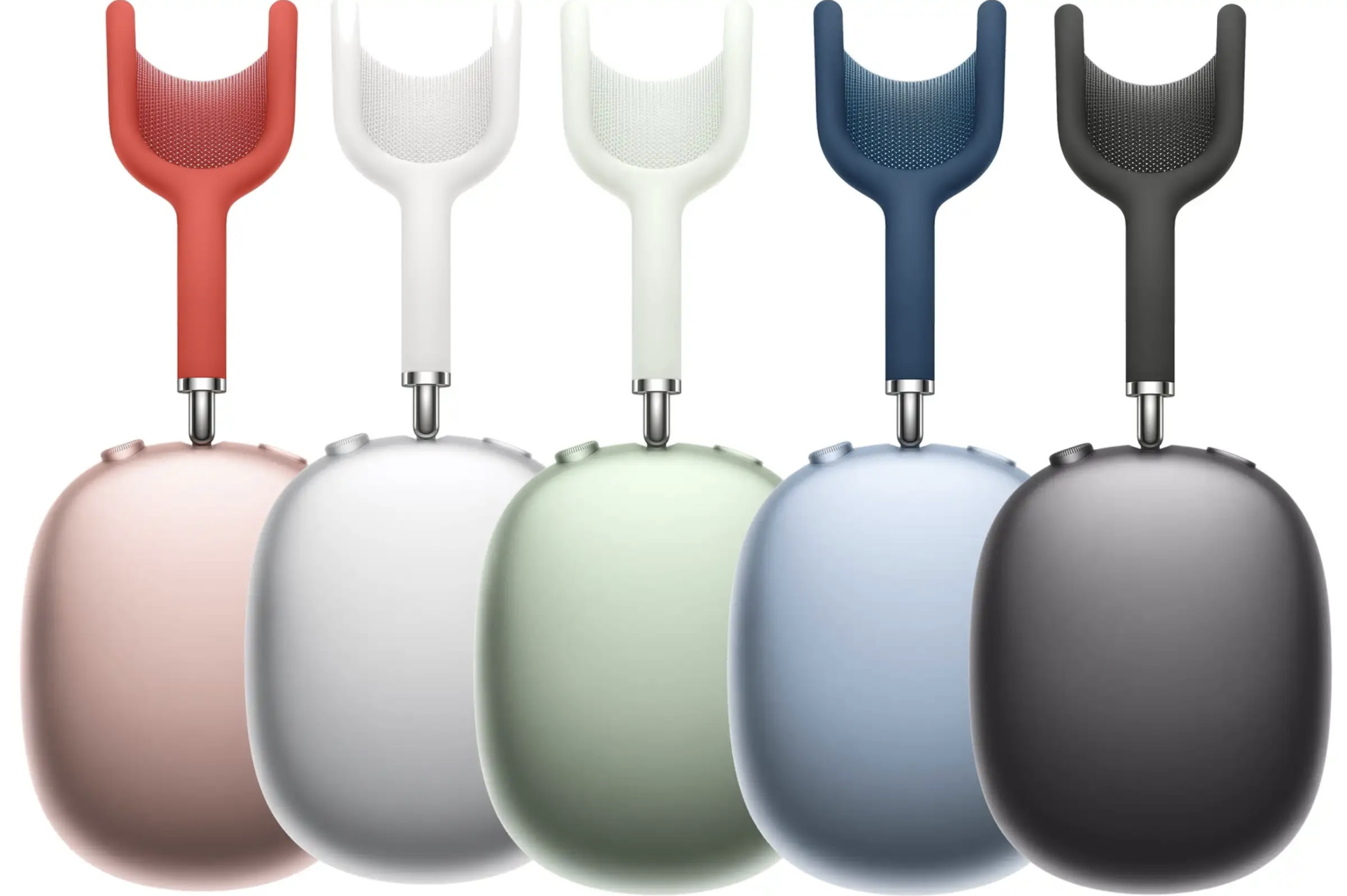
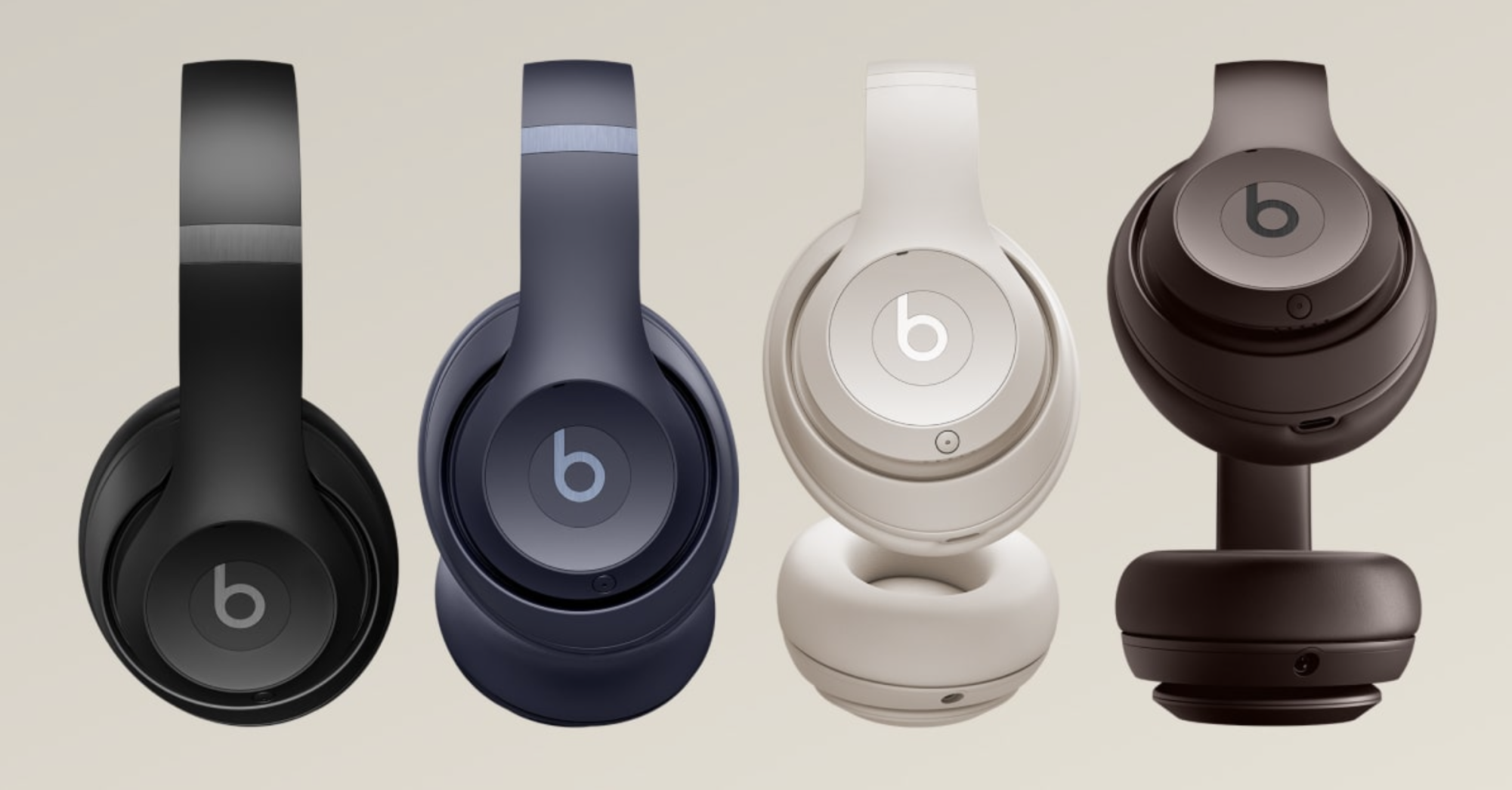

Features – Noise Cancellation and Transparency Mode:
Noise Cancellation and Transparency Mode exemplify cutting-edge technology in audio devices. Both models offer world-class noise-cancellation, but the AirPods Max takes the win in this feature – with these, it’s just you and the music even in a jam-packed subway. Although Beats wins over its competitors, Bose QC45 and Sony WH1000XM5, it falls short against Apple.
The company also pulls ahead with transparency mode function. The tech giant’s inaugural noise-canceling earbuds, AirPods Pro, combined noise cancellation and state-of-the-art sound processing to eliminate all white noise and attain crystal-clear audio. In contrast, its competitor struggles to master this category, and users still hear white noise.
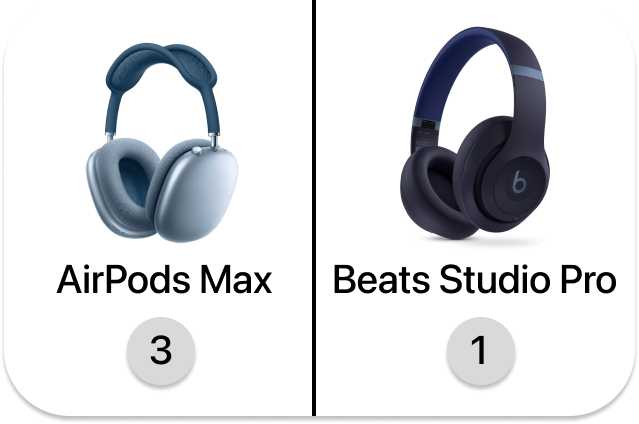
Sound Quality:
As the pioneers of the headphone industry, both models feature remarkable default sound tunings. The AirPods’ flat-frequency audio delivers a consistent, well-rounded mix of bass, midrange, and treble. Apple also implemented Spatial Audio, a new technology that uses an accelerometer in headphones to track users’ heads as they move around.
Imagine you’re on the couch in front of a movie. Logically, sounds on the left side of the screen should flow from the speaker to your left. But because of the acoustics of the AirPods, when you turn your head to the right, the sound doesn’t just blare from the left headphone anymore. Somehow the sensation feels like it hits you right in the back of the head. It serves as an aural illusion and tricks your brain into thinking you don’t have headphones on as if you’re in a real live movie theater. Despite this high-tech, users can’t customize the equalizer to personalize their profiles.
On the other hand, Beats Studio Pro reflects the taste of Dr. Dre, the founder of the company and a renowned rapper. Its bass-heavy acoustic profile goes well with various music genres, such as Pop, R&B, Hip hop, and Classical. With its redesigned driver (the little speaker inside) and support for Lossless Audio (Original Source of Music), the headphones deliver diverse sounds. Like its rival, it showcases Spatial Audio, and on top of that, it features three optimized profiles connected through USB-C: Beats Signature, Entertainment, and Conversation.
In terms of sound quality, Beats Studio Pro offers a better acoustic signature than its contender. The Lossless Audio delivers high-fidelity for audiophiles. Users listen to a harmony of bass, treble, and midrange, and this killer feature stands out amongst a myriad of the industry’s best.
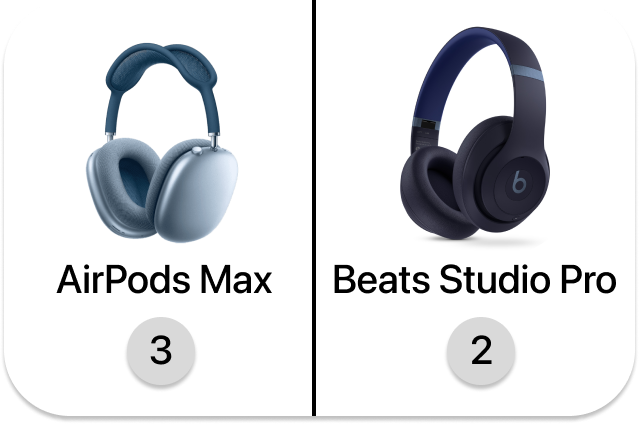
Comfort:
When it comes to comfort, AirPods Max weighs 384.8 grams (similar to the iPad’s mass), and Beats weighs 260 grams. Although it may not seem like much, the 100-gram difference keeps many users from eargasms. Apple attempts to counter this with its mesh-structured over-ear cushions, but after a few hours of music, many users suffer from headaches, a red flag in audio experience.

Price:
AirPods Max, just like any other Apple Product, comes with a hefty price tag, at ₩769,000 ($549) while the Beats Studio Pros begin at only ₩449,000 (349.99)—far cheaper than their overpriced counterpart. In the Max’s price range, alternatives such as B&O’s BEOPLAY HX or Bose QC45’s support higher music codecs, noise cancellation, and sound quality. However, Apple mania syndrome pushes buyers to jump on the bandwagon, as celebrities post pics of the pods on social media for likes and shares.
The Beats, on the other hand, provide a good return on your investment. Although they lack on-ear detection (automatically playing and pausing the media), they integrate well with Apple and Android. Before, the tech giant kept products limited to their ecosystem, but it enhanced compatibility with its sub-brand.
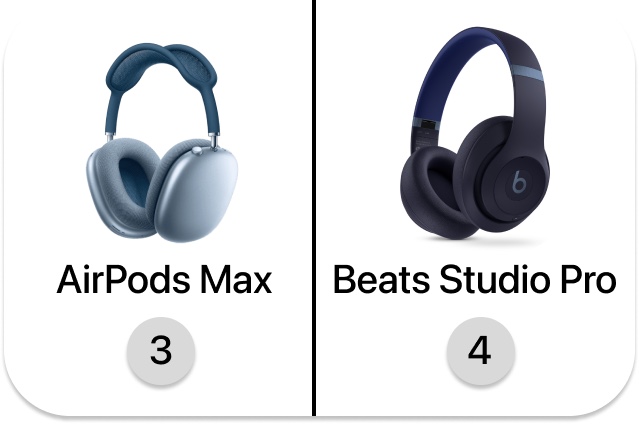
Conclusion:
If you want to hop on the trend and cop a pair of AirPods Max, consider its more affordable counterpart instead. Despite Apple’s high-tech noise cancellation and transparency, I prefer Beats’ compatibility with every genre. It also deserves a shoutout for its comfort and convenience that far surpasses Max – the more I use it, the more I appreciate its light weight and portability. Beats Studio Pro shapes a new paradigm in headphones, both with its au courant technology and value.















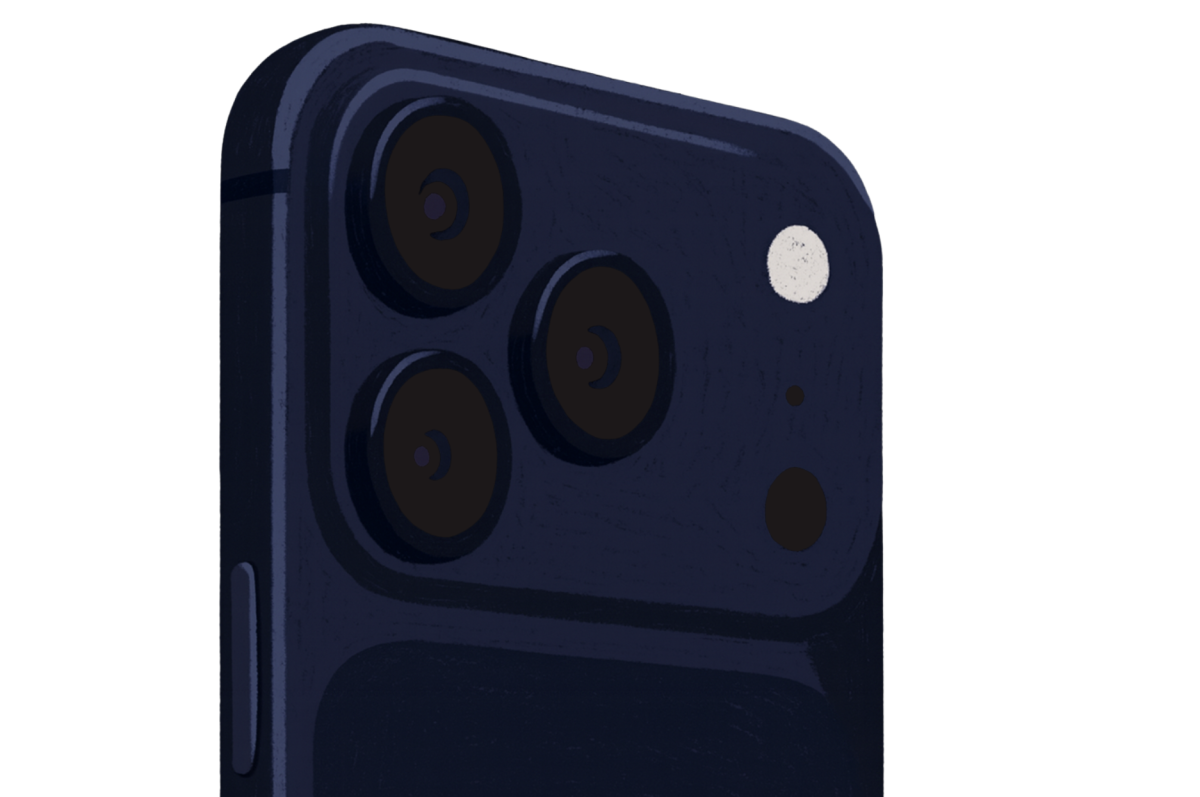

































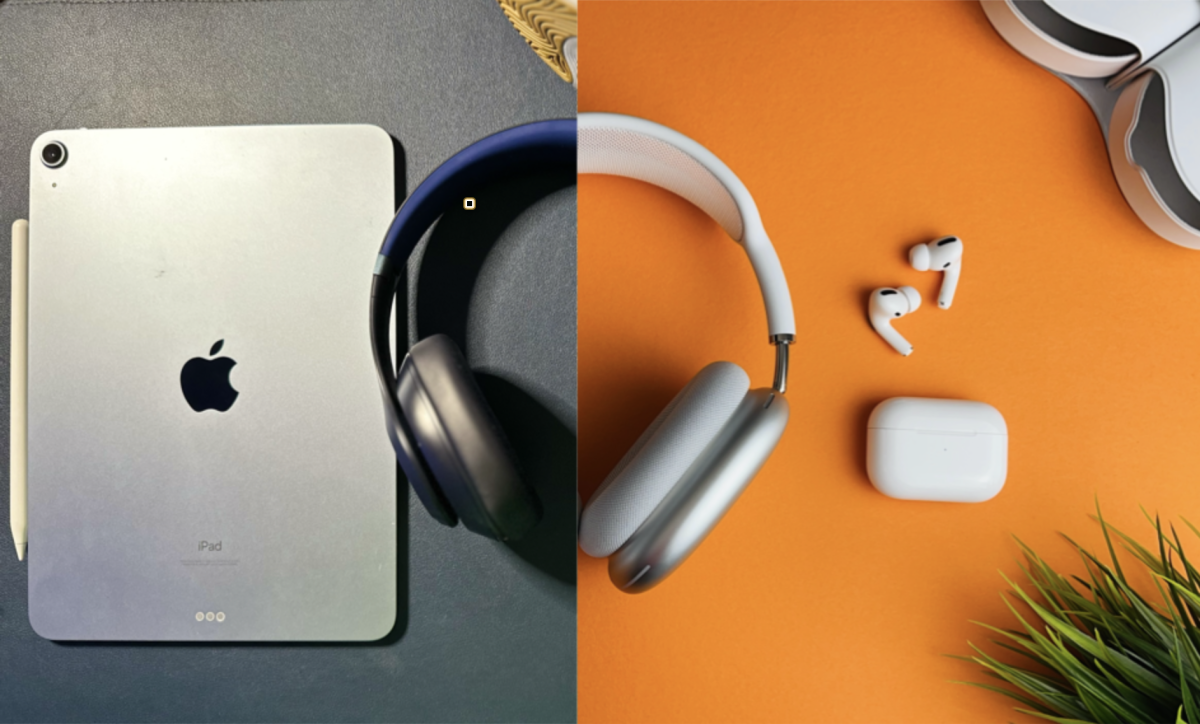

Eddy • Feb 1, 2024 at 6:32 pm
I like how you guys bought 2 headphones for this article! Massive W
Sean • Feb 1, 2024 at 6:26 pm
Next time I get my money I will save up or beats!!
Volt • Feb 1, 2024 at 6:25 pm
I never knew that there were a sub brand of Apple called Beats. I think if you don’t have enough money Beats would be better because it was 3:3 and comfortable.
GG • Feb 1, 2024 at 6:21 pm
Wow! This article is so cool!!